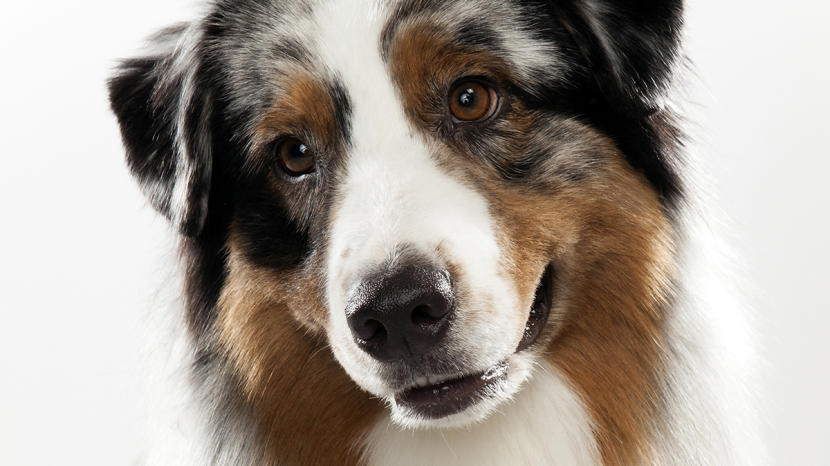Traveling with Your Dog.

Riding with his head out the window leaves a dog's sensitive nose, ears and eyes
unprotected from flying objects. Dogs should ride in a crate, attached with a harness or,
alternatively, lying down on the back seat. Otherwise, they might interfere with the driver
and, in the event of an accident or even a quick stop, risk being injured or even thrown
from the car.Before departure on a long trip, you should confirm that your intended
accommodations permit pets and determine whether any special rules or fees apply.
Ten days beforehand, visit your veterinarian for a canine physical, including scheduled
inoculations, and to obtain state-required rabies and health certificates. If you are planning
international travel with your pet, contact the appropriate consulate for necessary
documentation. When leaving the United States for a destination in Canada or Mexico,
you'll only need rabies and health certificates. Some countries (although not Canada or
Mexico) and even some states (Hawaii, for example)may require quarantine periods
for visiting dogs, which could cause you to rethink your plans.
international travel with your pet, contact the appropriate consulate for necessary
documentation. When leaving the United States for a destination in Canada or Mexico,
you'll only need rabies and health certificates. Some countries (although not Canada or
Mexico) and even some states (Hawaii, for example)may require quarantine periods
for visiting dogs, which could cause you to rethink your plans.
In addition to traveling papers, your dog needs food, bowls, blankets, leashes, a
pooper-scooper and plastic bags, and any medication he may be taking. To avoid
unpleasantness of traveling with a dog with diarrhea, you can bring some of your own
water from home and make the switch over to local water a gradual one. Don't neglect
your dog's grooming while you're on the road; bring along any necessary grooming
supplies. Your dog's favorite toys and blanket or pillow will be familiar and comforting to
him. Make sure your dog is wearing a flat collar (and never a choke collar) with
identification tagslisting your home address, a neighbor's phone number and a number
at your destination.
your dog's grooming while you're on the road; bring along any necessary grooming
supplies. Your dog's favorite toys and blanket or pillow will be familiar and comforting to
him. Make sure your dog is wearing a flat collar (and never a choke collar) with
identification tagslisting your home address, a neighbor's phone number and a number
at your destination.
In the event that he gets lost, bring along a good photo. And it never hurts to have a
canine first-aid kit with you.
Dog Harnesses
With a dog harness, a dog is able to enjoy the view out the window without interfering
with the driver or being a danger to himself or others in case of an accident. Riding in
the front seat poses a potential danger to your dog if you have a passenger-side air bag
in your vehicle. In that case, he should be harnessed in the back.
with the driver or being a danger to himself or others in case of an accident. Riding in
the front seat poses a potential danger to your dog if you have a passenger-side air bag
in your vehicle. In that case, he should be harnessed in the back.
Heatstroke occurs when body temperature suddenly rises to dangerous levels. It poses
a particular danger to dogs, which rely on panting to keep cool. (Only the canine's paw
pads have sweat glands.) Overweight, elderly and ill dogs are most at risk. Parked cars
and other confined spaces with little ventilation represent danger. In humid, 75 degrees
F (24 degrees C) weather, a car parked in the shade with partly open windows reaches
120 degrees F (49 degrees C) in just a half-hour and the dog inside suffers. As his
temperature rises, he becomes weak and uncoordinated; shock, coma and then death
may follow.If your dog is a victim of heatstroke, soak him in cool (not cold) water and
rush him to a vet.
a particular danger to dogs, which rely on panting to keep cool. (Only the canine's paw
pads have sweat glands.) Overweight, elderly and ill dogs are most at risk. Parked cars
and other confined spaces with little ventilation represent danger. In humid, 75 degrees
F (24 degrees C) weather, a car parked in the shade with partly open windows reaches
120 degrees F (49 degrees C) in just a half-hour and the dog inside suffers. As his
temperature rises, he becomes weak and uncoordinated; shock, coma and then death
may follow.If your dog is a victim of heatstroke, soak him in cool (not cold) water and
rush him to a vet.
Heatstroke can be avoided by keeping your dog in a cool, ventilated space with plenty of
water. In really hot weather, avoid car trips if possible, unless the vehicle is equipped
withair conditioning. Sun blinds attached to the car windows can also help keep your
dog cool.
withair conditioning. Sun blinds attached to the car windows can also help keep your
dog cool.
Moving has its own special stresses for dogs, so your pet needs extra attention and
reassurance during this time. Keep your dog in a safe spot, out of the action, on moving
day. Once in the new home, a quick return to familiar routines and the swift reappearance
of well-known toys and bedding should reassure your dog that he is home.
Комментариев нет:
Отправить комментарий